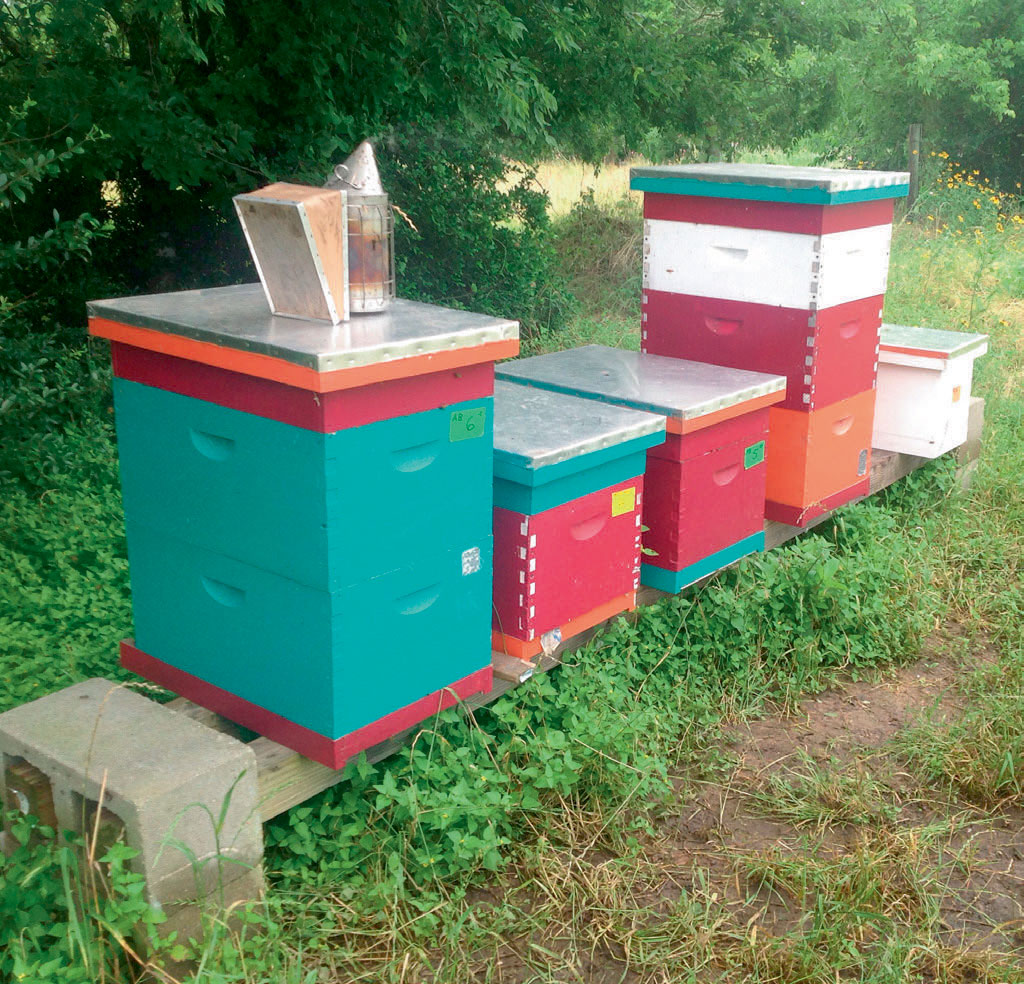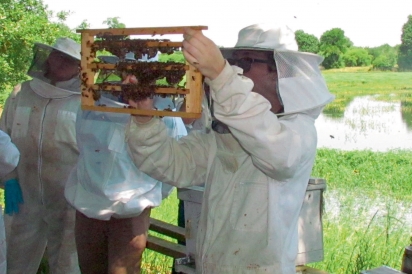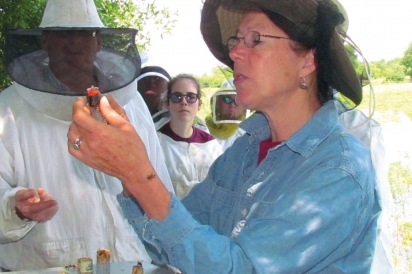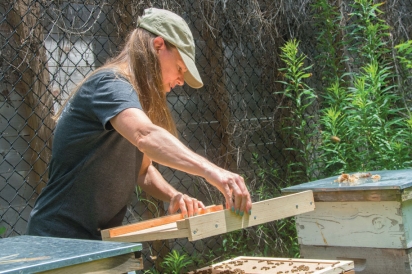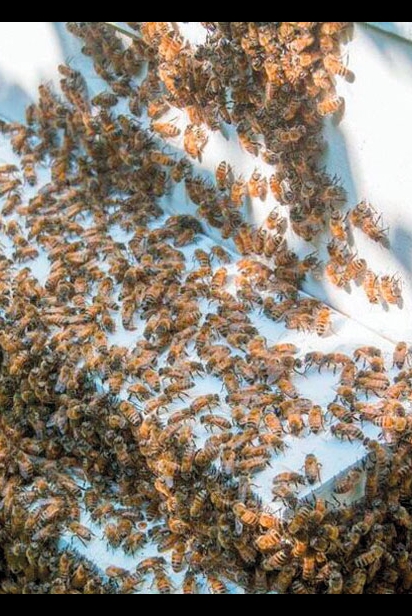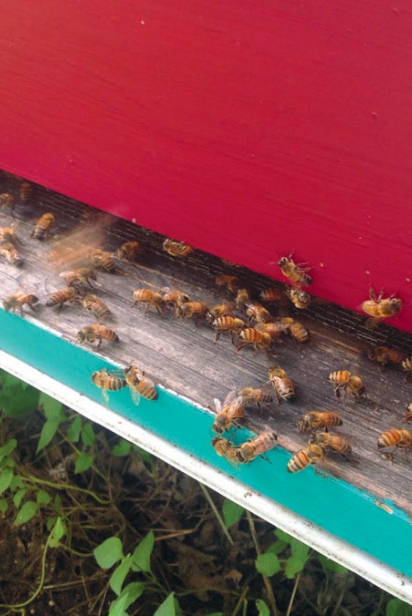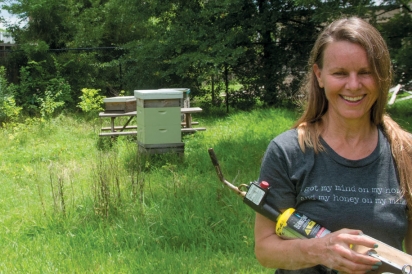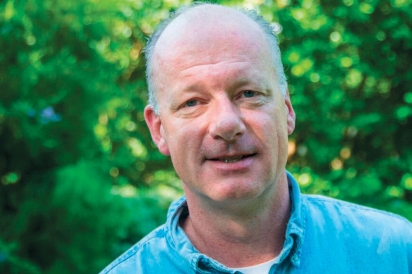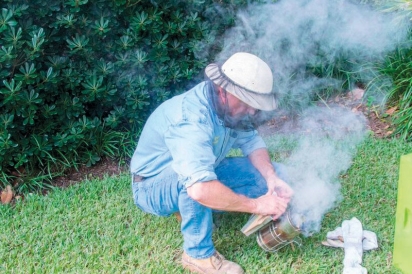Oh, Honey, Bee My Key to Healthy Eating
Area programs aim to help preserve the pollinators
The virgin queen honeybees line up in cages on one side of the microscope, as the drones buzz in a screened flight box on the other. A queen is carefully transferred from an individual wire cage with a cork top to a tube. Once she bumps her head at the front of the tube, a second tube closes the end, allowing her to back her way into its open taper. She backs into the tapered end, and then it’s naptime. She won’t remember a thing.
Under the microscope, the tube is secured to a source of carbon dioxide as hooks open up her sting chamber. She’s given 10 microliters of semen from up to 10 drones and time to recover.
As gene selection science has become the epicenter of honeybee survival in the last decade, this queen bee is making history. She’ll be placed in a nucleus colony and begin laying as many fertilized eggs as her naturally mated counterparts, up to 2,000 per day if all goes well.
Bee insemination is part of the research mission of the Texas A&M University Honey Bee Lab in College Station, run by Juliana Rangel, PhD, assistant professor of Apiculture. Besides her role to provide educational services to the local beekeeping community, Rangel leads research in reproductive quality, colony survival and the effects of agro-chemicals on reproductive and colony health. She teaches honeybee biology and management and oversees the Texas Master Beekeeper Program, a five-year licensing program that launched this year.
Susan Cobey, from Washington State University, world renowned for her techniques in insemination, sits at the microscope with five students around her, peppering her with questions about drone selection.
“You can tell by the behavior,” she says. “Mature ones are rammy, you know. They’re ready to get out there.” She points to the window buzzing with escapees as the best stock in the room. “Sometimes if you look at the flight board during flight time, all the drones will be down combing their antennas. I mean, they look like little boys getting ready for the prom.
It certainly has an impact on the market of foods associated with pollination as the cost to rent just one hive for almond harvest went from $76 in 2005 to $157 in 2009, an all-time industry high due to a rapid increase in honeybee loss rates. A bee rental on almond trees is rough on the bee, and bad for honey production, so the almond crop rates are the highest.
Honey is made when a bee gathers nectar from flowers and the bee’s stomach enzymes convert the sucrose of nectar into glucose before it stores the liquid in the comb of the hive. From there the worker bees fan the mixture, drying it out until it has about 18% water content. Then the bees cap the cell with wax and store it for food.
If you have an unwanted bee colony on your property, do not destroy it. Contact the local Harris County Beekeepers for safe removal and relocation of the bees to a hive where they can flourish. “Beekeepers are aging out,” said Rice, and with bee colonies in a fight for survival around the world, “we just need more to help manage the issue.”
Sarah Junek is a freelance writer in Houston. She is a graduate of the University of North Texas Mayborn School of Journalism. She grew up on a cattle ranch west of Houston and has agricultural roots across the state, on all three sides of her family tree, from Eastland and Burleson, to Austin and Waller counties. Sarah’s “Seed Stories” was nominated for an Edible Award earlier this year


